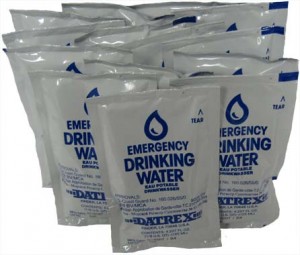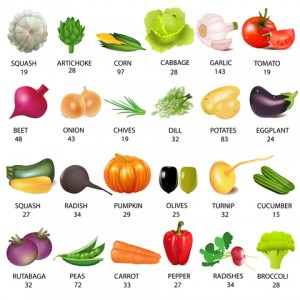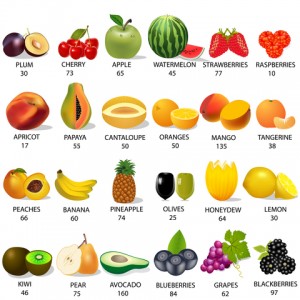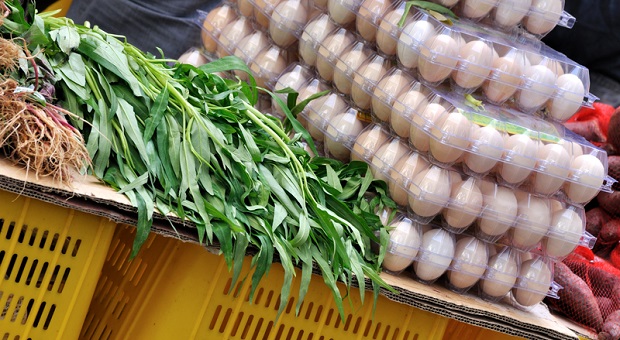In a SHTF situation you can go without showers, brushing your teeth, or changing your clothes but you absolutely cannot go without rations.
You can only last about 3 days without food before your body starts to break down and you’ll start noticing symptoms of dehydration after day 1 if you’re not eating OR drinking. We simply can’t overstate the importance of maintaining an adequate emergency rations supply, but how do you know how much is enough?
Instead of giving you an emergency supply list, we’re going to show you how to figure out your own needs based upon individual nutritional needs.
Just do the math for each family member per day, and add those numbers together to get your total daily ration needs. Then simply determine how many days you want to prepare for and multiply your daily needs by that.
How Much Water Will You Need for Your Emergency Ration?
How much drinking water you need is determined by many factors, but how much you weigh, how much you sweat, and how hot it is are the three biggies.
A good water rule-of-thumb is to divide your body weight in half. That’s how many ounces of water you need to drink per day.
There are 128 ounces in a gallon, just FYI. A simple formula that many of us use to determine how much water to store for basic survival is to allow for a half-gallon of drinking water per day per person for drinking purposes, and include it into your emergency ration.
Especially during a long-term or disease-driven SHTF scenario, personal sanitation will be critical to your survival. In order to prevent the spread of disease and even to maintain a healthy morale level, good hygiene is necessary. Fortunately, the water you’ll need for sanitation purposes doesn’t have to be potable (drinkable) as long as you can sanitize it in order to kill any disease-causing bugs in it.
Non-potable water may come from rainwater, ponds, streams or any other source of fresh water. Avoid saltwater or brackish water, though.
Some pros advocate allowing another half-gallon of water per day for this, but that’s a rather low number. Our advice is to start with a half-gallon per person, then figure your sanitation water needs based upon your individual situation.
How Much Food Will You Need for Your Emergency Ration?

If you lose power, the perishables in your fridge such as meat will only be good for about 3 days so use those first. Even after they’re gone, you’ll still have non-perishables such as peanut butter, canned meats and legumes to provide protein.
Just to be on the safe side, don’t allow for more than 3 days without access to food without having an emergency food supply. Even if you’re only preparing for a natural disaster that only requires a week or so worth of food, it’s a good idea to stock up in advance.
When news of a pending disaster such as a major storm is announced, unprepared people tend to panic. They rush to the stores and strip the shelves of food, water, batteries, and emergency supplies.
If you’re already stocked up, you don’t have to fight the crowds or worry about not getting there before the stores sell out.
You also don’t have to waste critical time shopping while you could be battening down the hatches and handling last-minute details.
In order to survive, you don’t just need food; you need nutrients to replenish your body and calories to create energy and maintain bodily function. For the sake of this discussion, we’re going to show you how much you need of each for basic survival and let you determine how much you’ll need to stockpile for your emergency ration based upon how long you want prepare for.
Macronutrients are the major nutrients that your body needs to function. They include carbohydrates, fat, and protein and you need a certain amount of them per day to stay healthy.
According to the USDA, here is what you need:
- Infants and toddlers: 5-20% protein, 40-65% carbohydrates and 30-40% fat.
- Kids and teenagers: 10-30% protein, 40-65% carbohydrates and 25-35% fat.
- Adults: 10-35% protein, 40-65% carbohydrates and 20-35% fat.

Not all food is created equally. Shoot for sources of good quality, monounsaturated fats that include omega-3’s and 6’s such as tuna.
Stay away from nutrient-poor polyunsaturated fats that are found in chips and processed foods.
Calories are what your body converts your food into and uses for fuel.
How many calories you’ll need will vary widely based upon your size, your age, your activity level and even the climate.
A good base number to shoot for just for basic survival is a minimum of 1200-1500 calories.
They will keep you alive as long as you’re getting the nutrition that you need, so buy nutrient-rich foods and stay away from the junk.

Building Your Stockpile
If you’re fortunate to have the extra cash to run out and purchase all the food that you need for your stockpile in one fell swoop, then great.
Unfortunately, most of us don’t have that luxury. To build your stockpile without going broke, buy a little extra each time you shop. If something is buy-1-get-1-free or on sale, grab a couple extra.
If you are lucky enough to have a garden or can hunt, do some extra canning. It doesn’t have to cost a fortune all at once to build your emergency rations stockpile, but it is critical that you do so!
This article has been written by Theresa Crouse for Survivopedia.
Photo sources: Dreamstime.











































































Thank you, thank you. I am tired of reading all those lists from “experts” for food I never eat. Two years ago I started stocking our pantry (2 adults) and made costly mistakes because of lists found all over the internet. I had to give most of the food away before it expired. This year I decided to start writing down what we ate everyday. Based on that ,I was able to stock food we use, rotate and hopefully continue using.
Same goes for buying garden seeds. Many of the”survival packs” of seeds have things you might never eat. Which means wasted money, although the extras could be used as barter. I have saved my own seeds for years, we try something new every year, and if we like it, it goes into our stash. FYI .. some veggies will reseed themselves if your garden is reasonably healthy and you don’t rototill the daylights out of it AND you grow open-pollinated vegetables, not hybrids. Tomatoes seldom cross (ie they grow the same variety each year not create new hybrids). It is almost impossible to kill tomato seed … they grow even after going through city disposal systems and sub-zero winters mean nothing. They will come up in your garden after you might normally buy plants, but will be super healthy to move wherever you want. My small potatoes that get missed in the fall also come back …sometimes for YEARS in former potato patches. I grow mine under a hay mulch which is super easy to pick (just lift hay and potatoes are lying there, NO digging necessary), but there is a weed/grass issue with hay (straw is better if available). Tomotilloes (think salsa) and ground cherries (considered a fruit for pies or preserves) are relatives of tomatoes and re-seed enthusiastically.
First, a person should train their body to burn fat instead of sugar. This can be done by eating less than 50 grams of carbohydrates per day for 21 days. Then keep carbohydrates under 150 per day to stay in a fat burning state. Humans are designed to run of fat. Can anyone imagine an animal with 40 days supply of fat hanging off it and having trouble functioning because he did not eat for three days? Being able to harness fat off the love handles beats all. It is cooked and ready to burn. You do not even need to chew it!. I agree with having food stored up and enough for neighbors too. Keep that in mind. People are stupid but it is an excellent opportunity to show love and kindness. And what real Americans are about: loving one another.
I really enjoyed Theresa Crouse’s article! It had important details like
how much water per person in an
emergency and other vital info. I give
this article 4 stars ! Thank you, Theresa!
May GOD richly bless you! Natalie